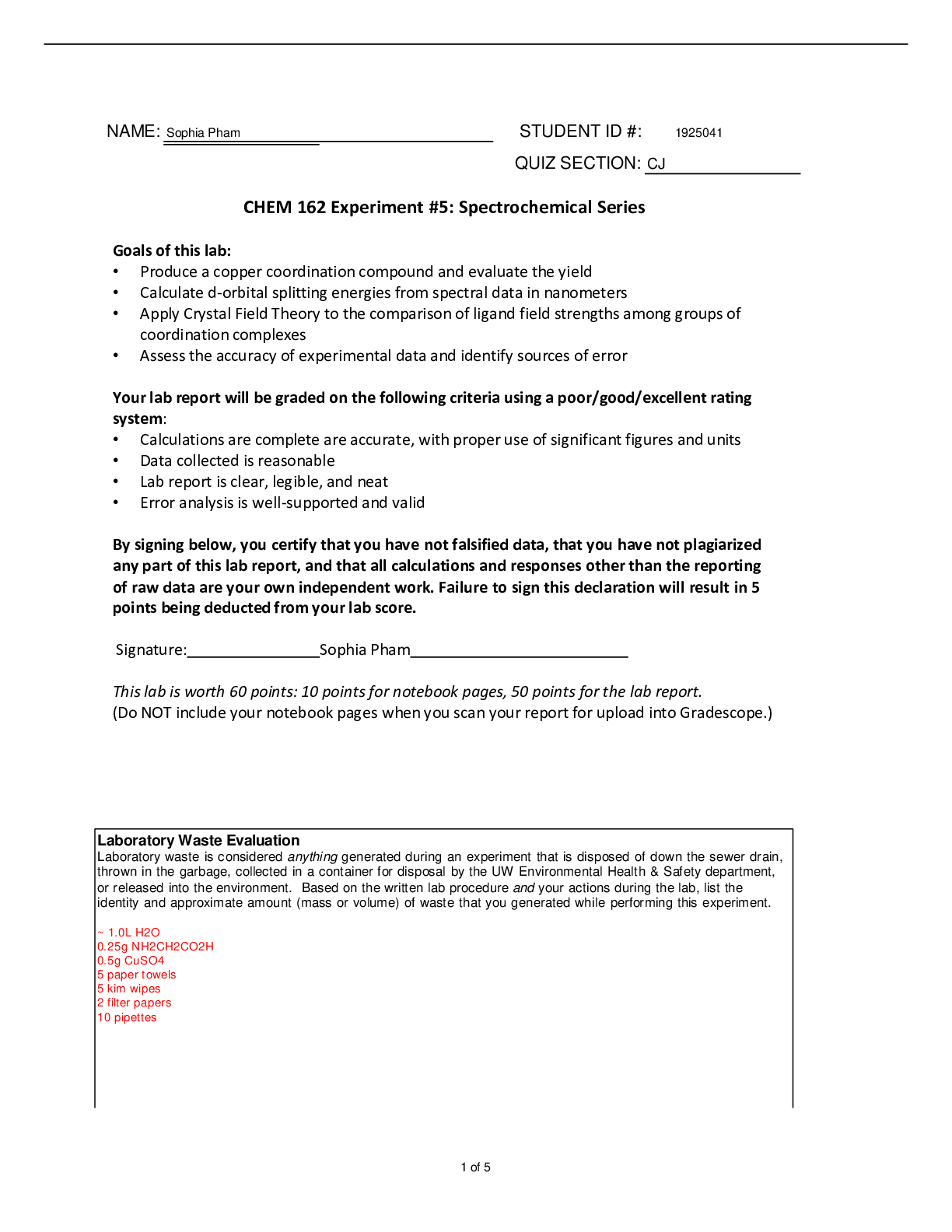Physics > Lab Report > PHYS 214 Photoelectric Effect Laboratory (Online version) (All)
PHYS 214 Photoelectric Effect Laboratory (Online version)
Document Content and Description Below
PHYS 214 Photoelectric Effect Laboratory (Online version) Name ___Pallavi Das______________________________ Note: we recommend you type in this document for most of your answers. If you need to inc ... lude a drawing or equations (and don’t want to use Word equation features), just write on a sheet of paper, take a photo, and insert the photo to this file. Then upload this Word file on Canvas. The due date for the laboratory is 6 pm on Friday. For Activity 1, we will be using the photoelectric simulation at https://phet.colorado.edu/en/simulation/legacy/photoelectric. This simulation runs on Java, which many computers will not run anymore (at least now without some effort), so we have made videos of the simulation and/or collected the data from the simulation for you. But you are most welcome to run the simulation for yourself if you can (run it at 100% Intensity if you do). For Activity 2, we will use experimental data collected by a TA. See lecture 9 and/or the relevant section of the textbook for details about the photoelectric effect. You will want to have open the Excel file of data posted on Canvas on the Laboratories page. Note: we encourage you to use Excel (or a similar spreadsheet program) for analyzing your data and that you use the trend line function for x-y scatter plots. Activity 1. Simulation Watch this video of the simulation with Platinum as the target. Use this video (or the simulation itself) to collect your data. In the simulation, we can control the wavelength of the light and the voltage applied (in 0.2 V increments) and we can measure the photocurrent. As you watch the video, answer these questions/do these tasks (1 and 2 below): 1. What is approximately the longest wavelength for which one observes a photocurrent? Why is there no photocurrent for longer wavelengths than this? What quantity does this wavelength tell you about Platinum? The longest for which one observes a photocurrent is around the value of 185 nm. There is absence of photocurrent for wavelengths longer than this because the threshold energy for the UV light is higher than the energy emitted by the wavelengths and hence is unable to let conductors eject electron from their surface. This quantity tells that the Platinum has a very high work function (or in other words it is almost inert and is basically non-reactive element.) [Show More]
Last updated: 3 years ago
Preview 1 out of 5 pages

Buy this document to get the full access instantly
Instant Download Access after purchase
Buy NowInstant download
We Accept:

Reviews( 0 )
$8.00
Can't find what you want? Try our AI powered Search
Document information
Connected school, study & course
About the document
Uploaded On
Aug 05, 2021
Number of pages
5
Written in
All
Additional information
This document has been written for:
Uploaded
Aug 05, 2021
Downloads
0
Views
117


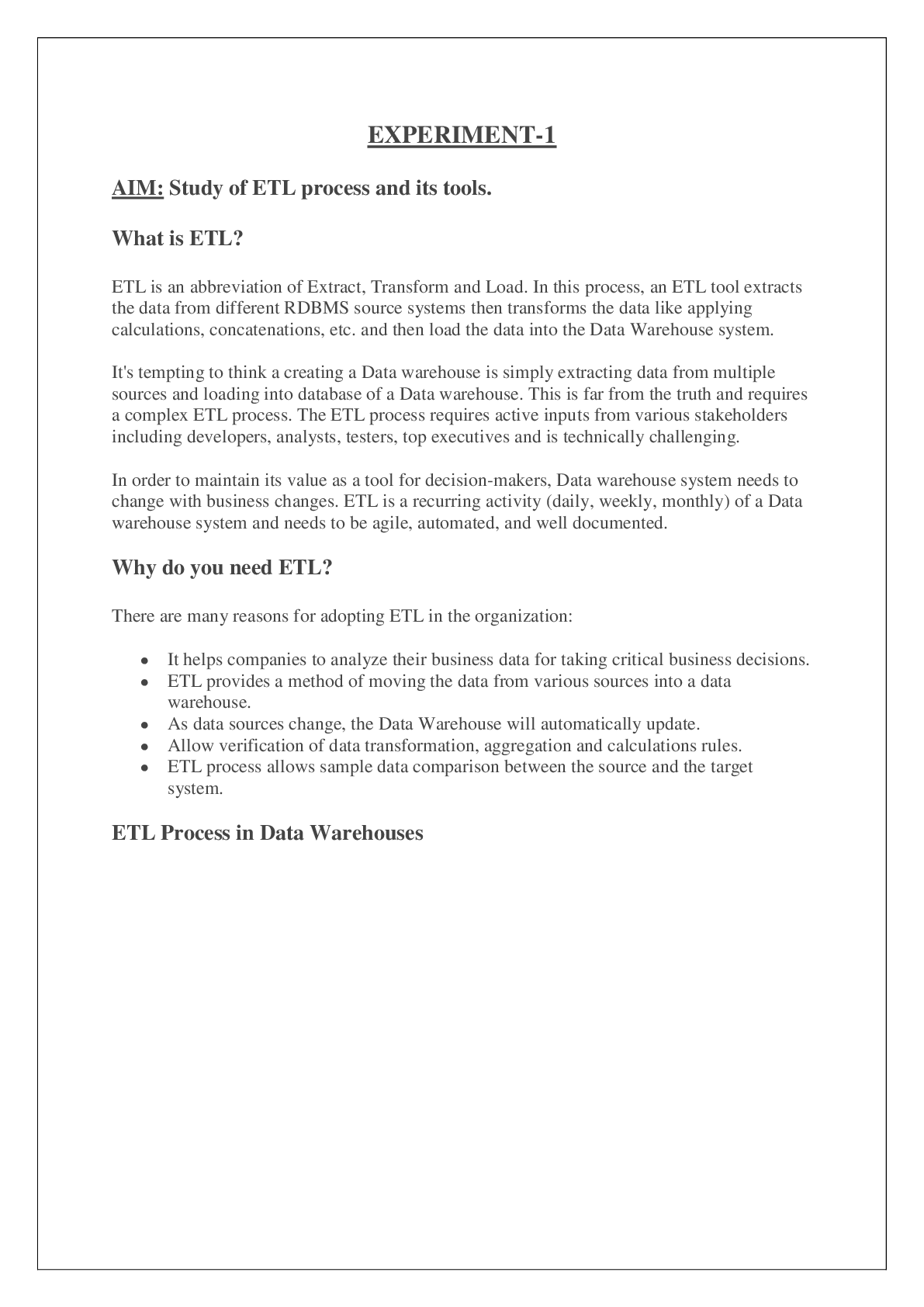

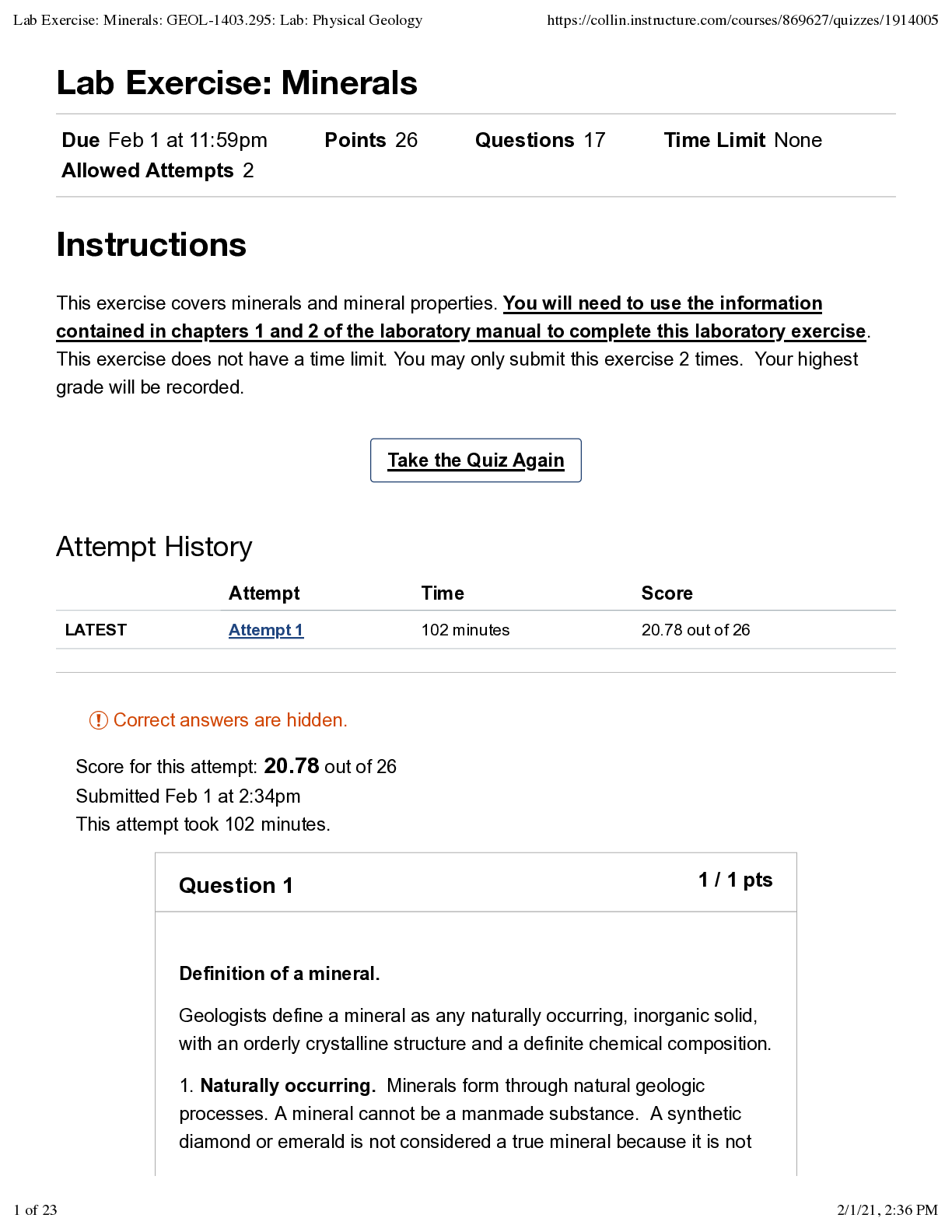


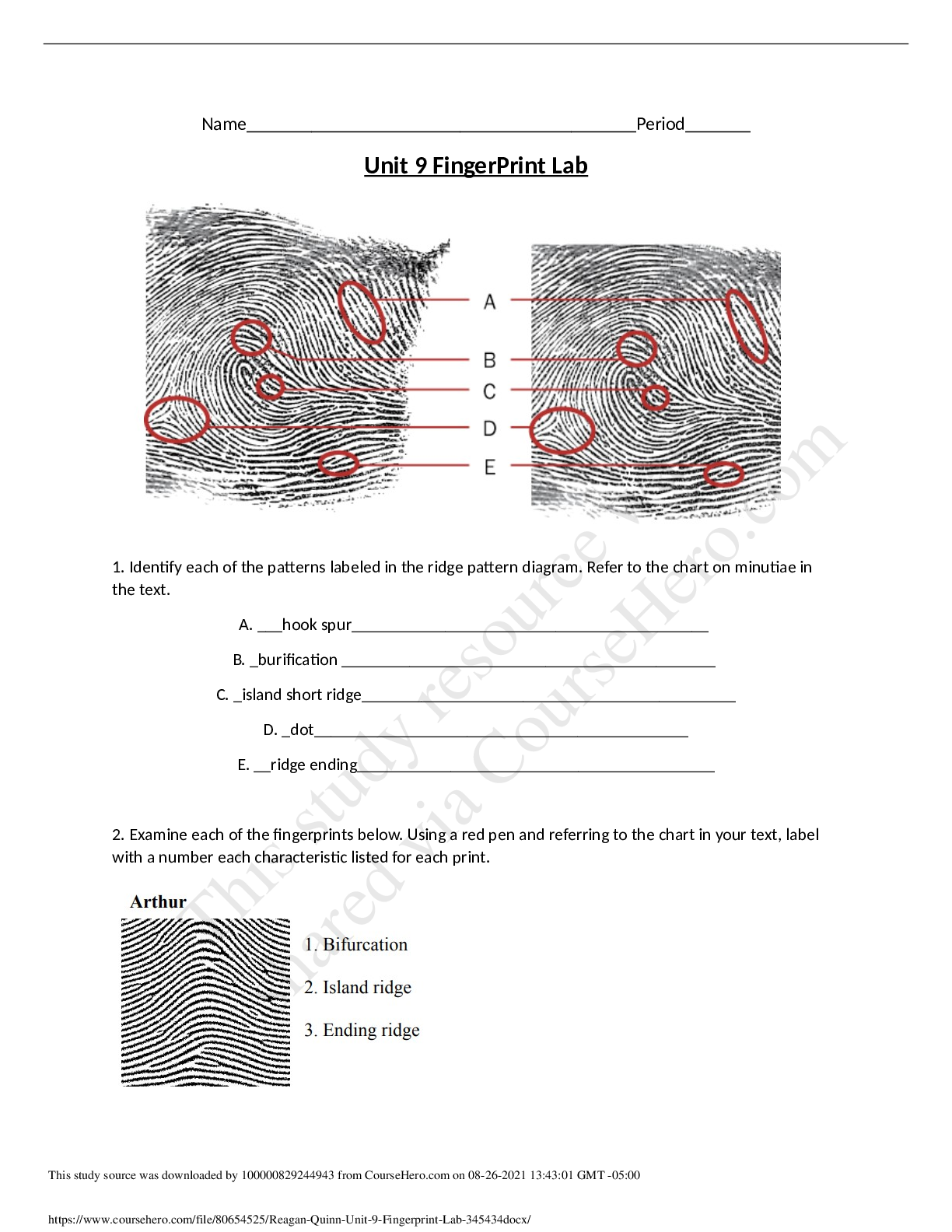




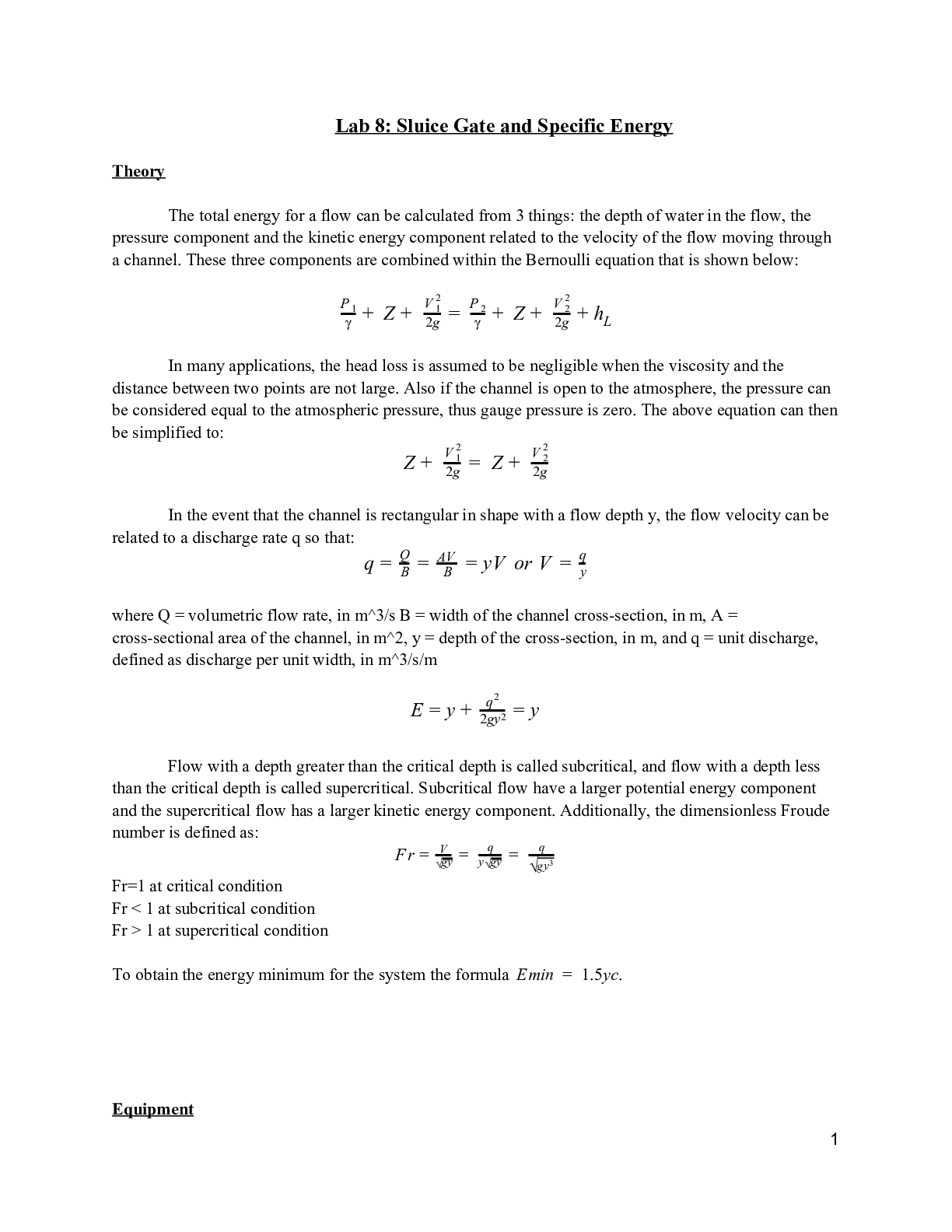
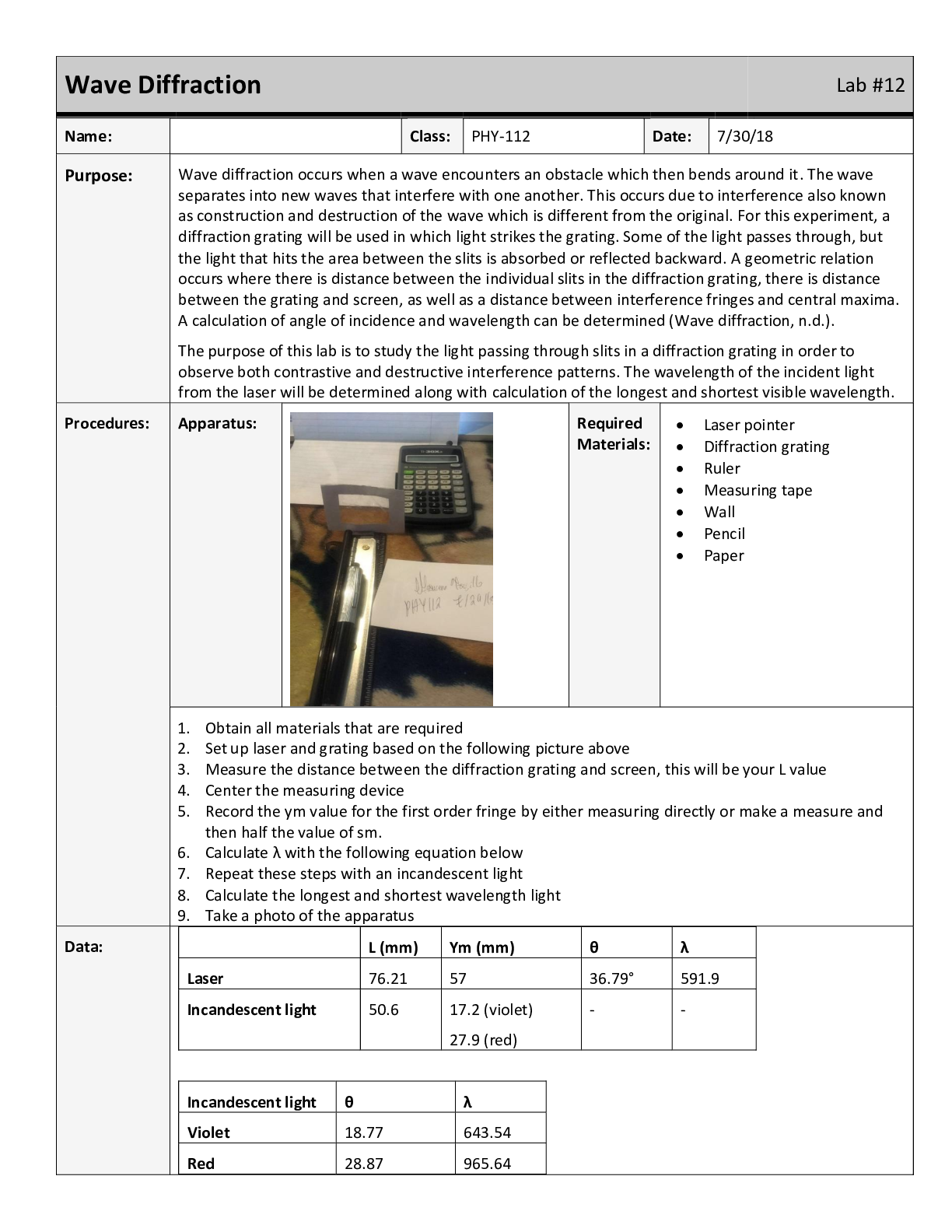

.png)

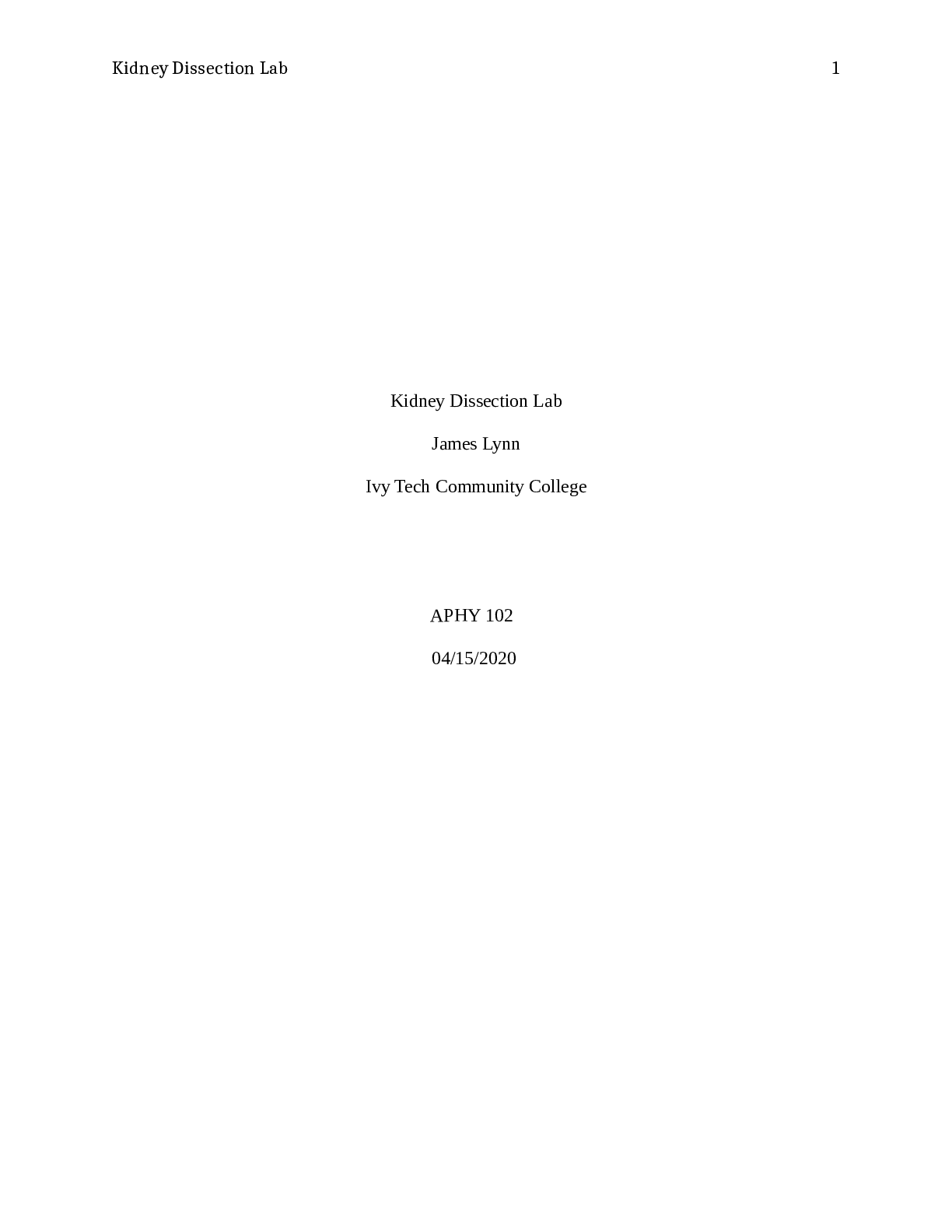



.png)

